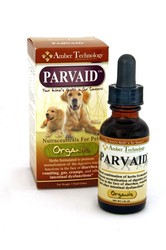Sisters Awesome Boxers
What is Parvo??
Canine parvovirus is an acute, highly contagious disease of dogs that was first described in the early 1970s. The virus has a tendency to attack rapidly reproducing cells, such as those lining the gastrointestinal tract.
The virus is shed in large amounts in the stools of acutely infected dogs for up to several weeks following infection. The disease is transmitted by oral contact with infected feces. Parvo can be carried on the dog’s hair and feet, as well as on contaminated crates, shoes, and other objects. When the dog licks the fecal material off hair, feet, or anything that came in contact with infected feces, he acquires the disease.
Parvo affects dogs of all ages, but most cases occur in puppies 6 to 20 weeks of age.
Following an incubation period that averages four to five days, the acute illness begins with depression, vomiting, and diarrhea. Some dog have no fever, while others have high fever (up to 106°F, 41.1°C). Pups with severe abdominal pain exhibit a tucked-up abdomen. Diarrhea is profuse and contains mucus and/or blood. Dehydration develops rapidly.
Treatment and Prevention
Puppies and dogs should not eat or drink until the vomiting has stopped. but require fluid support during that time. This can take three to five days. Antibiotics are prescribed to prevent septicemia and other bacterial complications, which are the usual cause of death.
The outcome depends upon the virulence of the specific strain of parvovirus, the age and immune status of the dog, and how quickly the treatment is started. Most pups who are under good veterinary care recover without complications.
Prevention: Thoroughly clean and disinfect the quarters of infected animals. Parvo is an extremely hardy virus that resists most household cleaners and survives on the premises for months. The most effective disinfectant is household bleach in a 1:32 dilution. The bleach must be left on the contaminated surface for 20 minutes before being rinsed.
